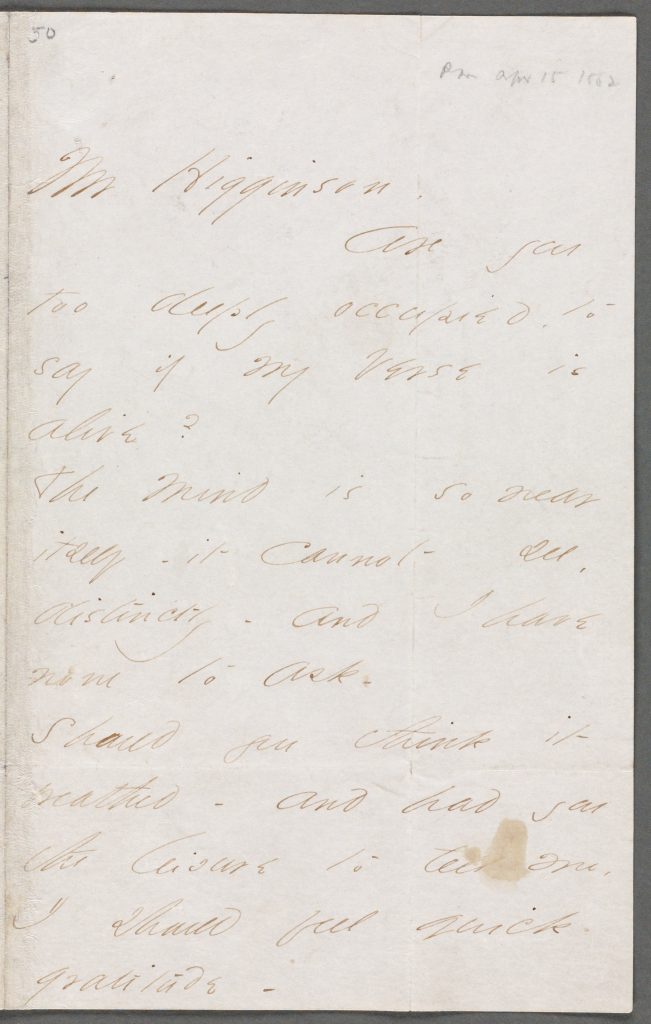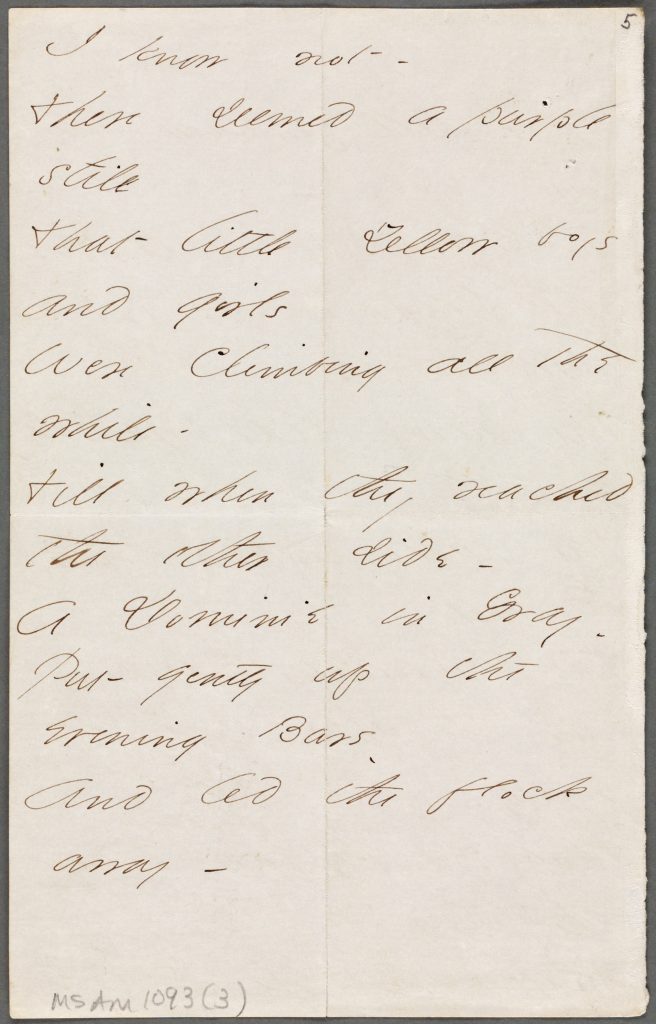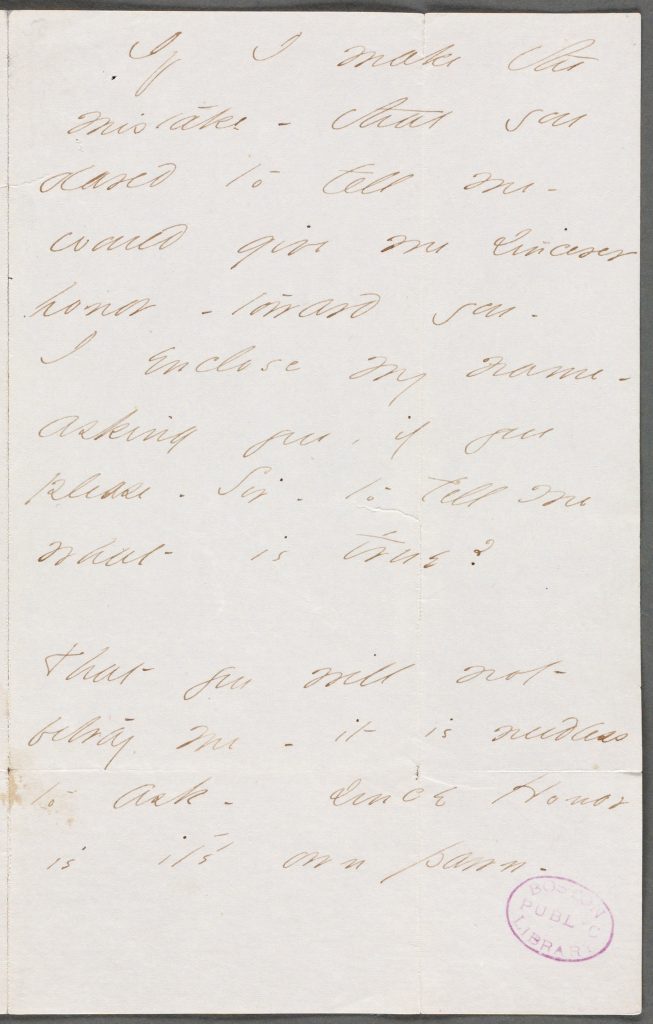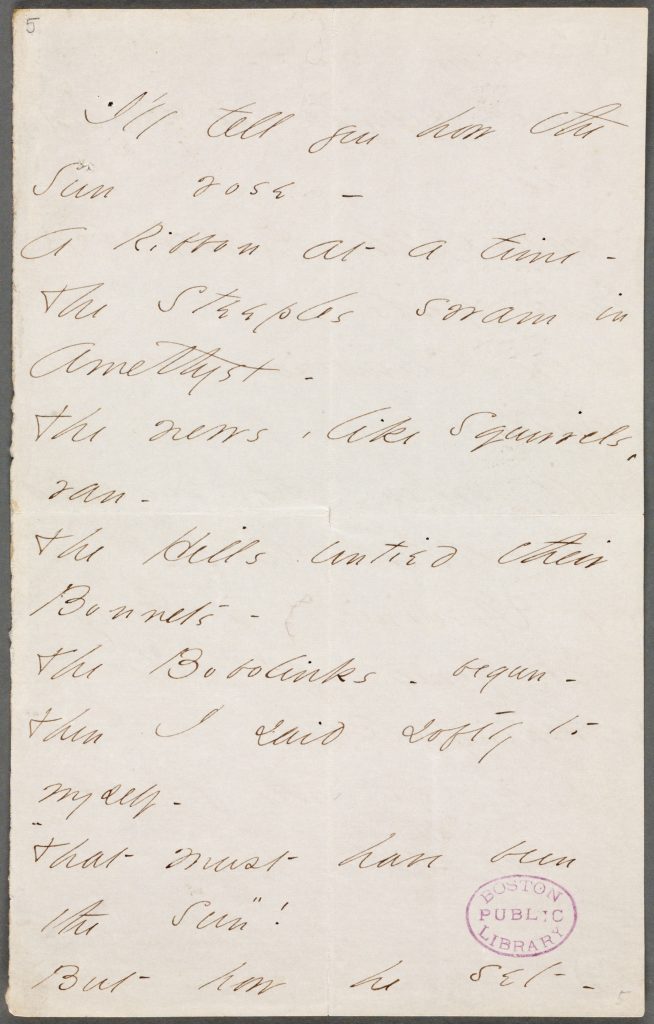In April, 1862, The Atlantic published an article by Thomas Wentworth Higginson titled “Letter to a Young Contributor.” He received a direct reply from a young poet named Emily Dickinson. She included four examples of her poems and asked if he thought her work was “alive.”

Higginson responded and offered her a positive review and some advice. What followed was an extended correspondence over the course of years. Dickinson came to consider Higginson a close friend and mentor, often signing her letters as “Your Scholar” or “Your Gnome.” She frequently sent him first and continuing drafts of her poetry.

In 1886, Emily Dickinson died. Higginson began collaborating with Mary Loomis Todd to collect, edit, and eventually publish her poetry. In her lifetime, Dickinson had published less than a dozen of her poems. Higginson and Loomis published the first full volume of her work, titled Poems, in 1890. They published a second volume in 1891. These volumes were the first time that Dickinson’s work had been exposed to the public at large. They established her as an important voice and one of the most famous American poets of all time.
Dickinson’s letters to Higginson have now been digitized by the Boston Public Library. Now anyone with the will to wade through her (very difficult) handwriting can get an intimate glimpse of the thoughts and voice of a great artist. Additionally, she included forty-eight poems or drafts of poems in her letters. Later letters in the collection are from Loomis to Higginson as they collaborated to publish Dickinson’s poetry. These materials are invaluable to understanding Dickinson and her process and now they are available to anyone, even when they’re in their pajamas at four o’clock in the morning.




Add a comment to: Featured Collection: Emily Dickinson Collection, 1862-1907